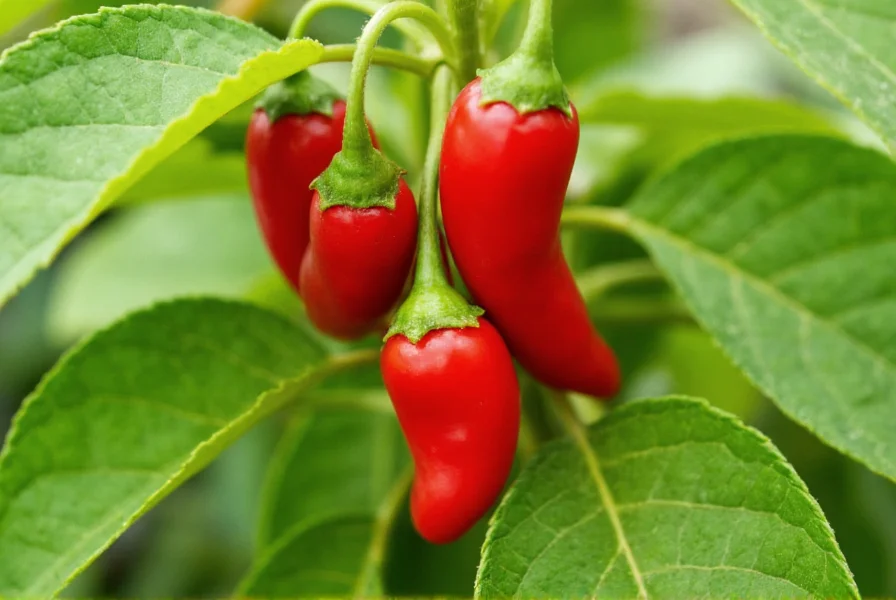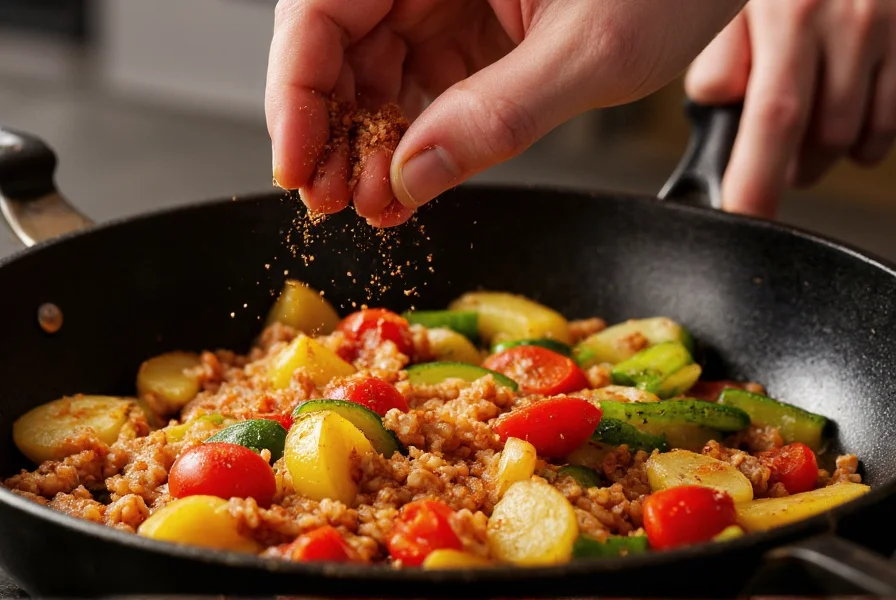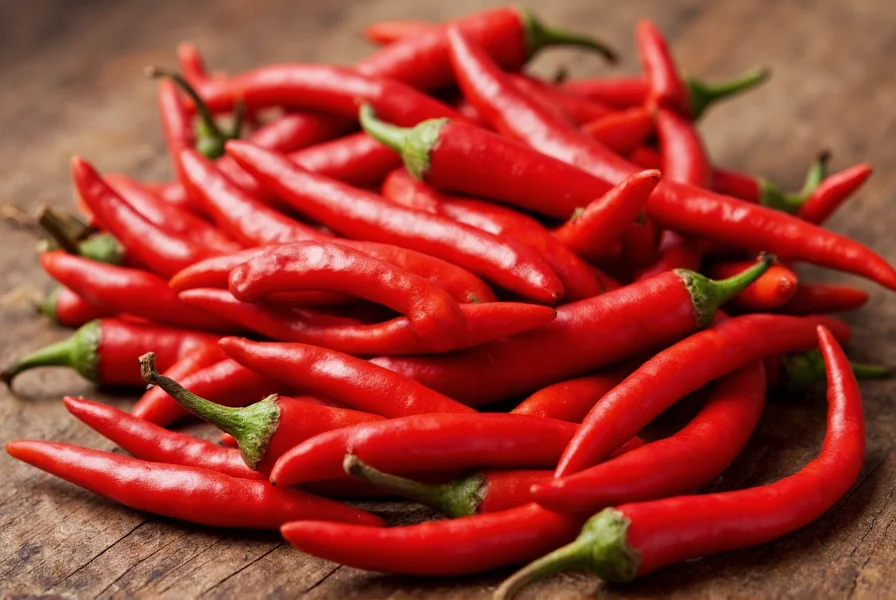Understanding the distinctive characteristics of cayenne chili peppers helps home cooks and health-conscious individuals make informed decisions about incorporating this versatile ingredient into their diets and wellness routines. Unlike milder peppers, cayenne delivers significant heat while offering unique culinary and potential physiological properties.
Origins and Botanical Profile
Cayenne peppers trace their origins to French Guiana, though they're now cultivated worldwide, particularly in tropical and subtropical regions. Botanically classified as Capsicum annuum, cayenne belongs to the nightshade family alongside tomatoes and eggplants. The name "cayenne" derives from the city of Cayenne in French Guiana, where Portuguese explorers first encountered these fiery peppers in the 15th century.

Heat Measurement and Comparison
When evaluating how hot is cayenne pepper compared to other varieties, the Scoville scale provides objective measurement. Cayenne registers between 30,000-50,000 Scoville Heat Units (SHU), placing it significantly hotter than jalapeños (2,500-8,000 SHU) but milder than habaneros (100,000-350,000 SHU). This heat level makes cayenne an excellent choice for those seeking noticeable spice without overwhelming intensity.
| Pepper Variety | Scoville Heat Units | Relative Heat Level |
|---|---|---|
| Cayenne Pepper | 30,000-50,000 | Moderately Hot |
| Jalapeño | 2,500-8,000 | Mild to Medium |
| Habanero | 100,000-350,000 | Very Hot |
| Serrano | 10,000-23,000 | Medium Hot |
Nutritional Composition and Potential Health Benefits
Examining cayenne pepper nutritional facts reveals a nutrient-dense profile. One teaspoon (2 grams) of cayenne powder contains approximately:
- 6 calories
- 13% of daily vitamin A needs
- 9% of daily vitamin E requirements
- 8% of daily vitamin C intake
- Significant capsaicin content (0.1-1%)
The compound responsible for cayenne's heat, capsaicin, has been studied for potential health applications. Research suggests capsaicin may support metabolic function, provide temporary pain relief through topical application, and contribute to cardiovascular health. However, these potential benefits require further clinical validation, and cayenne should not replace medical treatment for health conditions.
Culinary Applications and Flavor Profile
Professional chefs value cayenne for its distinctive flavor profile that extends beyond mere heat. When exploring using fresh cayenne peppers in cooking, note that they offer:
- A bright, slightly fruity undertone beneath the heat
- Excellent solubility in both oil and water-based preparations
- Versatility across global cuisines from Cajun to Asian
- Ability to enhance flavors without overwhelming other ingredients
Culinary professionals recommend adding cayenne early in cooking for deeper flavor integration or toward the end for more pronounced heat. The seeds contain the highest concentration of capsaicin, so removing them reduces heat intensity while maintaining flavor.
Selecting, Storing, and Preparing Cayenne Peppers
When shopping for fresh cayenne peppers, look for firm, glossy specimens with vibrant color and no soft spots. Proper storage extends shelf life significantly:
- Refrigerate fresh peppers in a paper bag for up to 2 weeks
- Freeze whole peppers for up to 6 months
- Dry peppers by hanging in a warm, well-ventilated area
- Store dried peppers in airtight containers away from light
When handling cayenne peppers, wear gloves to prevent skin irritation, and avoid touching your face. The capsaicin oil can cause significant discomfort if it contacts sensitive areas.
Substitutes and Alternatives
Understanding cayenne pepper vs red pepper flakes helps when substitutions are necessary. While both provide heat, they differ significantly:
- Cayenne offers pure, consistent heat (powdered form)
- Red pepper flakes contain varying heat levels from multiple pepper types
- Cayenne has a cleaner, more direct flavor profile
When seeking cayenne pepper substitutes, consider:
- Crushed red pepper (use 1.5x amount)
- Hot paprika (use 2x amount for similar heat)
- Tabasco sauce (1/8 teaspoon replaces 1/4 teaspoon cayenne)
- Serrano peppers (1 small pepper replaces 1/4 teaspoon powder)
Safety Considerations and Potential Side Effects
While generally safe for culinary use, some individuals should exercise caution with cayenne. Those with gastrointestinal sensitivities may experience discomfort, and topical applications can cause skin irritation. The most common potential side effects of cayenne pepper include:
- Temporary burning sensation in mouth or on skin
- Heartburn or acid reflux in sensitive individuals
- Nasal irritation when handling powdered form
- Temporary increase in blood pressure
People taking blood thinners or managing ulcers should consult healthcare providers before consuming cayenne in medicinal quantities. Culinary amounts used in normal cooking present minimal risk for most healthy adults.
Practical Applications Beyond the Kitchen
Many gardeners appreciate cayenne's dual purpose as both food and natural pest deterrent. The capsaicin deters mammals and insects without harming plants. Some crafters use dried cayenne in decorative arrangements, though this requires careful handling to prevent accidental exposure.

Conclusion
Cayenne pepper remains one of the most versatile and widely used hot peppers globally. Its balance of heat, flavor, and potential health properties makes it valuable in both culinary and wellness contexts. By understanding proper usage, storage, and substitution options, home cooks can confidently incorporate this dynamic ingredient into their cooking repertoire while respecting its potent nature.
Frequently Asked Questions
What's the difference between cayenne pepper and red pepper flakes?
Cayenne pepper is a single pepper variety ground into a fine powder, providing consistent heat and flavor. Red pepper flakes contain a mixture of dried peppers (often including cayenne, but also others) with varying heat levels. Cayenne offers more precise heat control in recipes, while red pepper flakes provide textural contrast and more complex flavor.
Can cayenne pepper help with weight loss?
Some research suggests capsaicin in cayenne may temporarily boost metabolism and reduce appetite, but these effects are modest. Cayenne should not be considered a weight loss solution. Any potential metabolic benefits are best realized as part of a balanced diet and active lifestyle, not as a standalone intervention.
How much cayenne pepper equals one fresh cayenne pepper?
One fresh cayenne pepper (approximately 4 inches long) equals about 1/2 teaspoon of cayenne powder. However, heat levels can vary significantly between peppers, so adjust to taste. Start with less and gradually increase to achieve desired heat level.
Does cooking destroy the beneficial compounds in cayenne?
Capsaicin, the primary active compound in cayenne, is heat-stable up to approximately 400°F (204°C). Normal cooking temperatures don't significantly degrade it, though prolonged high-heat cooking may reduce potency slightly. The vitamin content, particularly vitamin C, decreases with extended cooking.
Can I grow cayenne peppers at home?
Yes, cayenne peppers grow well in containers or garden beds in warm climates. They require 6-8 hours of direct sunlight, well-draining soil, and consistent watering. Most varieties mature in 70-80 days from transplanting. Home gardeners often report better flavor from freshly harvested peppers compared to store-bought options.











 浙公网安备
33010002000092号
浙公网安备
33010002000092号 浙B2-20120091-4
浙B2-20120091-4